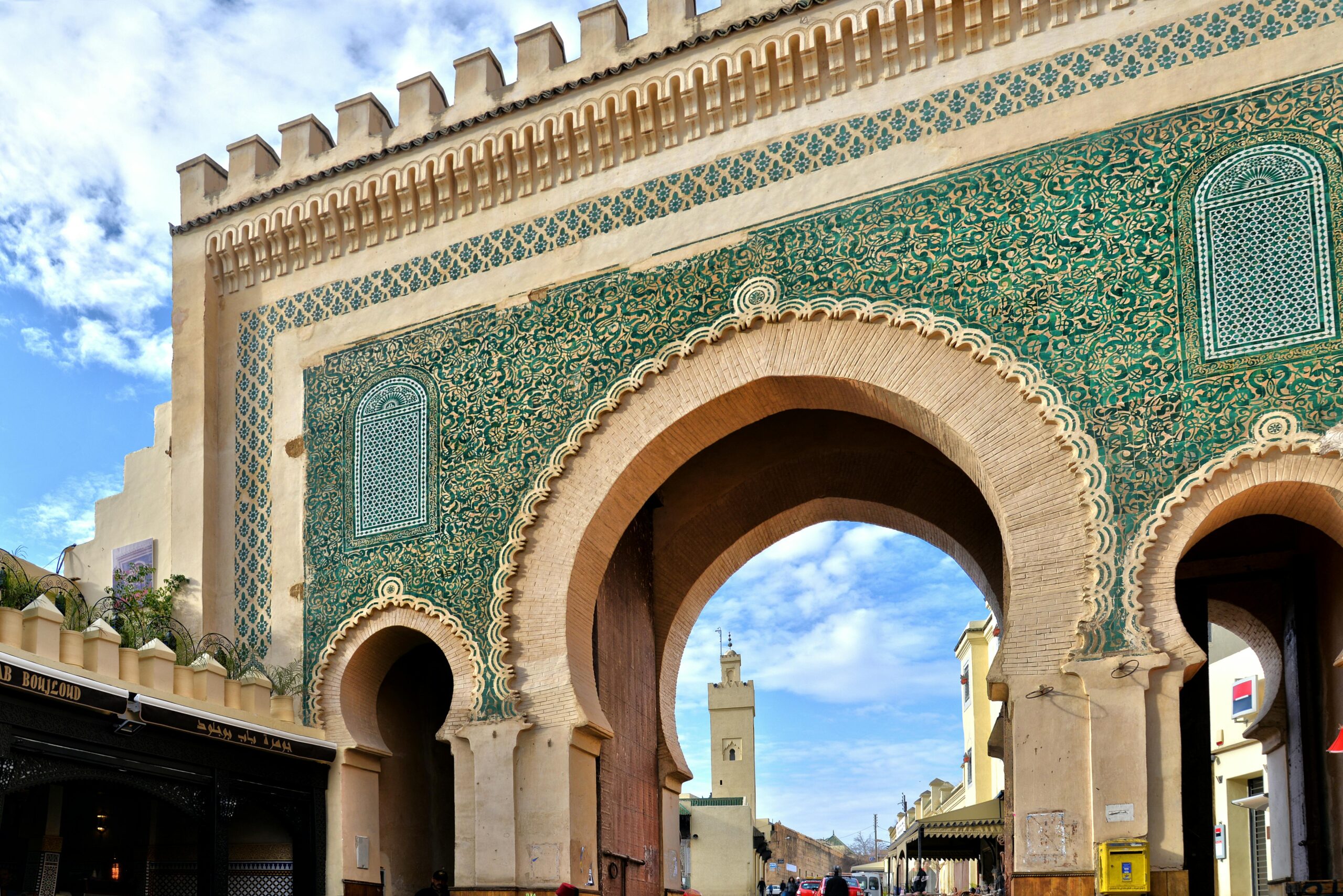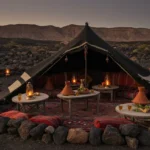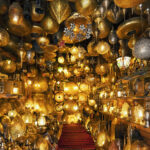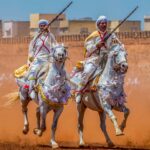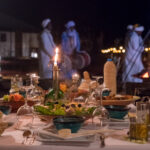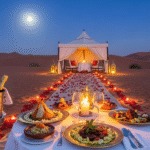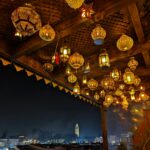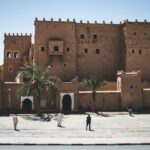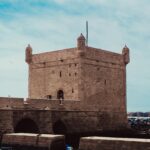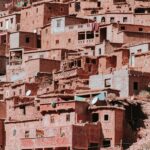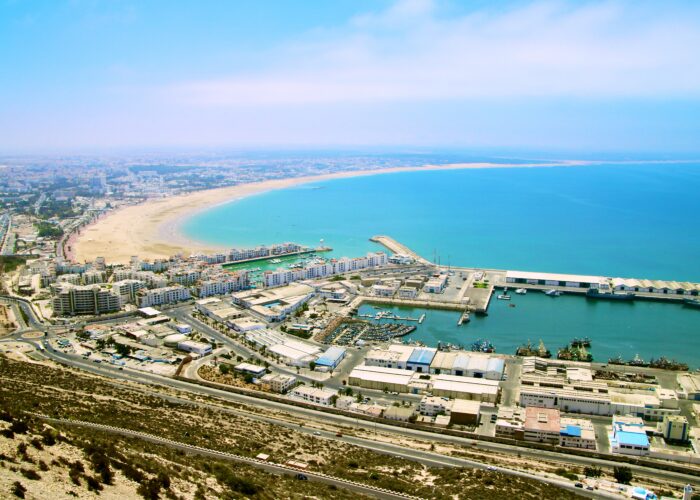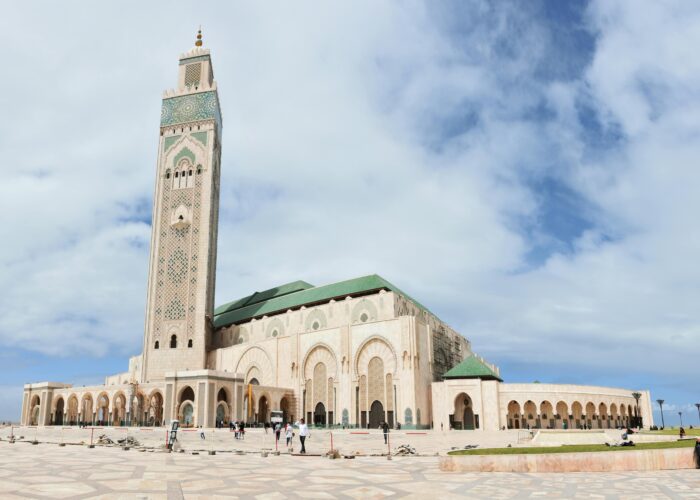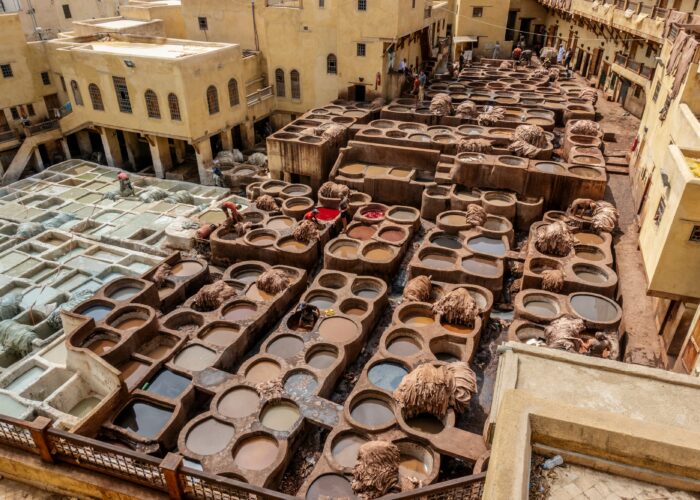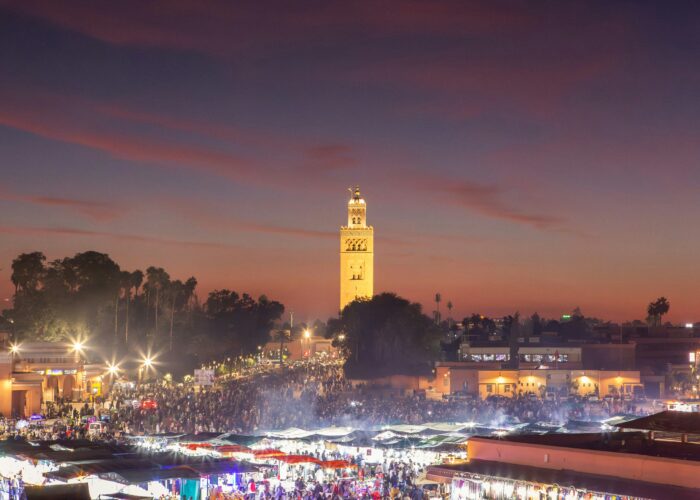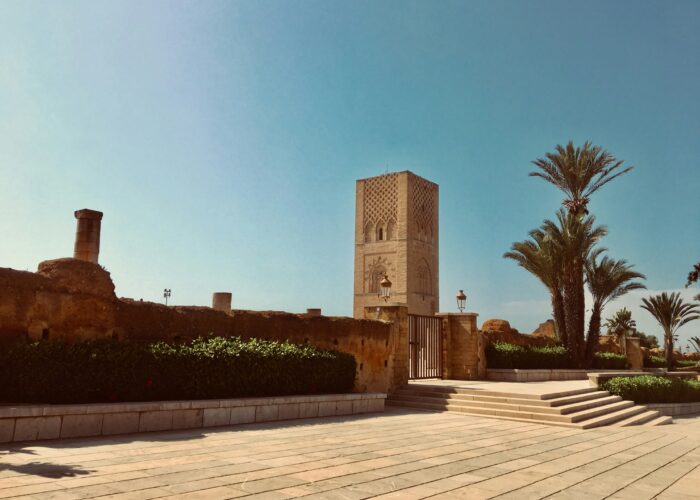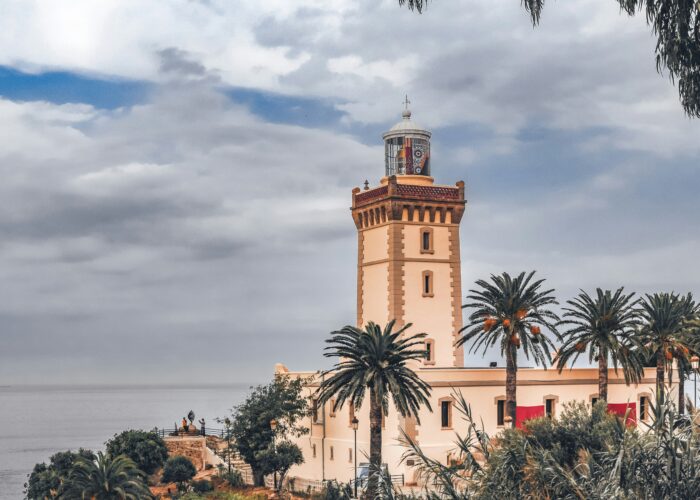Morocco, a country known for its diverse landscapes and rich cultural heritage, is home to four renowned imperial cities: Fes, Marrakech, Meknes, and Rabat. These cities serve as historical and cultural hubs, reflecting the country’s illustrious past and serving as some of the best cities to visit in Morocco. An imperial city in this context can be defined as a city that has historically been the capital and held significant political and cultural authority. Each of these cities boasts unique architecture, historical sites, and vibrant traditions, making them essential stopovers in any Morocco travel itinerary.
Fes is often regarded as Morocco’s cultural capital, famous for its ancient medina, which is a UNESCO World Heritage site. The city is characterized by its remarkable craftsmanship, with the Fes medina being one of the largest pedestrian areas in the world. This lively area offers visitors the chance to explore what to do in Fes, Morocco, with its bustling souks and traditional workshops. On the other hand, Marrakech is renowned for its vibrant atmosphere and numerous attractions. Visitors often inquire, “Is Marrakech worth visiting?” and the answer is a resounding yes, as the city features stunning gardens, palaces, and an array of markets showcasing the best Moroccan culture.
Meknes, located between Fes and Rabat, is another imperial city worth exploring. It is known for its historical significance, including the famous Moulay Ismail, and offers visitors a chance to discover the best things to do in Meknes, while also delving into the city’s past. Lastly, Rabat, the capital city of Morocco, is home to impressive rabat kasbah of the udayas and is often regarded as a quieter counterpart to its counterparts. Despite being less frequently visited, the question, “Is Rabat safe for tourists?” reinforces its appeal as a destination full of charm.
The exploration of Morocco’s imperial cities provides an insightful glimpse into the country’s history, architecture, and culture. Each city presents a unique opportunity to experience the diverse aspects of Moroccan life, making them a vital part of any cultural itinerary focused on the richness of Moroccan heritage.
Fes: The Spiritual and Intellectual Capital
Fes, often regarded as the spiritual and intellectual heart of Morocco, has a rich history that dates back to the 8th century. Founded by Idris I during the Idrisid dynasty, this city blossomed into a significant center for religious, educational, and cultural development. Visitors to Fes are instantly transported back in time, with its narrow streets and historical architecture evoking a sense of timelessness. One of the key attractions in Fes is the Fes El-Bali, a UNESCO World Heritage site that features traditional medina architecture and a vibrant atmosphere.
The city is home to the esteemed Al Quaraouiyine University, recognized by UNESCO as the oldest operational university in the world. This educational institution has been pivotal in shaping Islamic scholarship and maintaining Fes’s status as a center of learning. The teaching facilities, libraries, and the surrounding atmosphere in Fes contribute to its reputation as a place where knowledge and spirituality intertwine.
For those exploring Fes, the Chouara Tannery is a must-visit. This iconic site provides a glimpse into traditional Moroccan craftsmanship, where leather goods are made using centuries-old techniques. The vibrant colors and the intricate process of creating high-quality leather items are fascinating to witness firsthand. Beyond artisan goods, Fes is also known for its delectable cuisine. Dining in the city allows visitors to savor authentic Moroccan dishes and experience the local culinary culture, making it one of the top places to see in Fes.
Fes distinguishes itself from other imperial cities, especially when compared to Marrakech and Meknes, through its historical significance and cultural depth. While Marrakech attractions might draw individuals seeking a more modern vibrancy, the traditional aura and intellect that permeate Fes make it distinctly special. Thus, when considering a visit, many travelers wonder what to do in Fes, knowing it offers enriching experiences that reflect the essence of Morocco’s cultural heritage.
Marrakech: The Red City of Vibrance
Marrakech, often referred to as the Red City for its distinct rosy-hued buildings, boasts a rich tapestry woven through several dynastic periods, notably the Almoravid and Saadian eras. These historical influences are palpable in the city’s architecture and cultural vibrancy. A prominent landmark that symbolizes this heritage is the Koutoubia Mosque, revered for its magnificent minaret that stands tall at 77 meters, serving as a key reference point in the city’s layout. For travellers seeking a taste of historical opulence, the Bahia Palace offers a glimpse into the life of the Moroccan elite during the late 19th century, with its stunning gardens and intricate tile work.
The heart of Marrakech pulsates at Jemaa El-Fnaa, a UNESCO-listed square that transforms throughout the day, presenting a dynamic scene filled with entertainers, food vendors, and local craftsmen. As evening descends, the square evolves into a vibrant open-air market, showcasing an array of traditional Moroccan cuisine and performances. This lively atmosphere contrasts beautifully with the serene landscapes of the Majorelle Garden, a tranquil retreat designed by French painter Jacques Majorelle. Lush vegetation and striking blue buildings make this garden a hidden gem within the bustling city.
Another essential experience in Marrakech lies within the souks, a series of labyrinthine markets offering everything from artisanal goods to luxury items. The diversity of merchandise available highlights both traditional craftsmanship and modern luxury, making the shopping experience unique. Visitors often engage in the age-old practice of bargaining, which adds excitement to their exploration of what to do in Marrakech. With a vibrant cultural fabric and an array of attractions, it’s clear why many ask, “is Marrakech worth visiting?” The answer, quite simply, is a resounding yes for those eager to immerse themselves in Morocco’s historical rich tapestry.
Meknes: The Quiet Imperial Gem
Meknes, one of Morocco’s imperial cities, offers a serene alternative to the more bustling metropolises of Fes and Marrakech. Once the capital under Sultan Moulay Ismail in the late 17th century, Meknes is steeped in rich history and distinctive architecture, which can be seen in its impressive structures and monuments. The city is often less frequented by tourists, making it an ideal destination for those seeking a peaceful exploration of Moroccan culture and heritage.
One of the most striking features of Meknes is the Bab Mansour Gate, a masterpiece of Moroccan architecture that dominates the entrance to the medina. This grand entrance showcases intricate tile work and beautiful carvings, which reflect the artistry of the period. Adjacent to the gate lies the bustling plaza where visitors can soak in the local atmosphere, providing a contrast to the quieter streets of the medina.
The Royal Stables, built to house thousands of horses, are another significant attraction. These stables, with their stunning design, illustrate the opulence of the Sultan’s court and offer visitors a glimpse into the grandeur of 17th-century life in Meknes. Similarly, the granaries, designed to store grain for the royal guard, highlight the strategic importance of the city during its height.
Furthermore, the Mausoleum of Moulay Ismail stands as a pilgrimage site for Moroccans, housing the remains of the Sultan who transformed Meknes into a vibrant imperial city. Its exquisite tile work and serene ambiance make it a must-visit site. For travelers keen to uncover what makes Meknes special, the destination promises a deep dive into Morocco’s royal history. While exploring hidden gems in Meknes, visitors will find a blend of tranquility and historical significance that may not be as pronounced in other Moroccan imperial cities.
Rabat: The Modern Capital with Royal Roots
Rabat, the capital city of Morocco, presents a fascinating juxtaposition of modernity and rich historical significance. As one of the four imperial cities of Morocco, it serves not only as the political heart of the nation but also as a reservoir of its cultural and architectural heritage. The city’s contemporary infrastructure is complemented by its historical sites, making it an essential destination for anyone exploring the Moroccan imperial cities.
One of the most prominent landmarks in Rabat is the Hassan Tower. This iconic minaret is part of a mosque that was never completed and stands as a testament to the architectural ambition of the era. Visitors are often drawn to the sight of the tower’s sandstone structure, intricately adorned with geometric patterns that are characteristic of Moroccan architecture. Nearby, the Mausoleum of Mohammed V offers another glimpse into Rabat’s royal past. This stunning mausoleum not only celebrates Morocco’s former king but also encapsulates the essence of Moroccan artistry with its elaborate tile work and serene atmosphere.
Another highlight is the Kasbah of the Udayas, a historical fortress overlooking the Bou Regreg river. The medina here offers narrow alleyways and gardens, serving as a perfect backdrop for leisurely strolls. On the opposite end of the spectrum, the Royal Palace showcases the grandeur of Morocco’s monarchy through its impressive gates and gardens. Visitors can appreciate its beauty from a distance, as the palace is a working royal residence. The blend of modern and historic elements makes Rabat a unique destination within the context of Morocco’s imperial cities. It embodies both the country’s historical lineage and its progression into a modern realm.
Comparison of the Four Cities
The four imperial cities of Morocco—Fes, Marrakech, Meknes, and Rabat—each offer a unique blend of architecture, culture, and history, catering to diverse visitor interests. Fes, known for its ancient medina, is an ideal destination for history enthusiasts and those looking to explore the intricate craftsmanship of Moroccan architecture. The Fes old city, a UNESCO World Heritage site, boasts narrow alleys, traditional souks, and historical mosques, making it a place where visitors can truly immerse themselves in Morocco’s cultural heritage. In contrast, Marrakech is considered a vibrant hub of modern-day Morocco, drawing tourists with its bustling souks, lively markets, and rich blend of Berber and Arabic influences. Attractions such as Jemaa el-Fnaa square allow travelers to experience the energy of the city, combining cultural performances with culinary delights.
Meknes, often overshadowed by its larger neighbors, offers a more relaxed pace and is home to noteworthy historical sites and the grand Mausoleum of Moulay Ismail. Known for its impressive gates and well-preserved architecture, Meknes is perfect for those who seek to explore what makes this imperial city unique. Meanwhile, Rabat serves as the political capital of Morocco and features the serene Kasbah of the Udayas along with other landmarks that reflect its rich history. It is the perfect city for travelers interested in a quieter atmosphere with access to significant historical and cultural sites.
The difference between Fes and Marrakech is pronounced, with Fes typically appealing to those interested in deep-rooted traditions and history, while Marrakech attracts visitors looking for a lively urban experience. For guidance on visiting these cities, travelers can consider itineraries that cater to their preferences—be it cultural experiences in Fes, shopping in Marrakech, historical exploration in Meknes, or discovering captivating Rabat tourist attractions. Understanding each city’s vibe will help ensure a rewarding visit to Morocco’s imperial cities.
Travel Tips
When embarking on a journey to the morocco imperial cities, it’s important to plan ahead to enhance your experience. The best time to visit these cities is during spring (March to May) and fall (September to November), when temperatures are mild and pleasant for exploring. During the summer months, especially in Marrakech, temperatures can soar, making sightseeing less enjoyable.
Traveling between the imperial cities can be easily accomplished via train or bus. The ONCF train service offers comfortable and efficient transport between Fes, Marrakech, Meknes, and Rabat, allowing for scenic views of the Moroccan countryside. While planning your itinerary, allocate at least two to three days in each city to fully appreciate the rich history and cultural offerings, particularly in Fes, where the medina is a UNESCO World Heritage site and offers numerous hidden gems.
Safety is generally good in Morocco, but it’s advisable to stay vigilant, especially in crowded areas like the souks of Marrakech or the bustling streets of Fes. Avoid displaying valuable items and be cautious when using ATMs. Familiarizing yourself with local customs, such as greeting people with “salam” or respecting dress codes in religious areas, will enhance your interactions and showcase your respect for Moroccan culture.
Local cuisine is another highlight of any visit to the imperial cities. Be sure to try traditional dishes such as tagines, couscous, and pastilla. Fes is particularly known for its culinary delights, while Marrakech attractions often include vibrant food markets. Each city offers unique specialties, so indulging in the local flavors should be on your list of what to do in Fes Morocco, Marrakech, and Meknes.
In exploring Morocco’s historical travel guide, consider adding a visit to the Kasbah of the Udayas in Rabat or taking a medina walking tour in Fes. With thoughtful planning and an open mind, your exploration of Morocco’s royal cities can be a rewarding adventure.
Conclusion
Exploring Morocco’s imperial cities—Fes, Marrakech, Meknes, and Rabat—provides a unique glimpse into the rich tapestry of the country’s history and culture. Each city offers its own distinctive charm and allows visitors to experience the diverse architectural styles, historical sites, and vibrant local traditions. For instance, Fes boasts the ancient medina filled with narrow alleys and traditional artisans, while Marrakech attracts travelers with its bustling souks and vibrant squares.
The historical significance of these imperial cities is profound. As you navigate through their streets, you will uncover stories of the past that continue to shape modern Morocco. Rabat, the capital, stands out with its royal heritage and landmarks such as the Kasbah of the Udayas, serving as a reminder of the country’s evolution. Meanwhile, Meknes offers hidden gems that reflect the legacy of Sultan Moulay Ismail, making it a worthy inclusion in your travel itinerary.
When planning your journey, it is vital to consider your interests. Whether you are more inclined towards the cultural experiences of Fes, the vibrant atmosphere of Marrakech, the historical insights in Meknes, or the political significance of Rabat, there is something for everyone. Understanding the differences between Fes and Marrakech, as well as the best things to do in these cities, will enhance your travel itinerary significantly.
Ultimately, visiting all four cities not only provides a comprehensive view of Morocco’s imperial past but also enriches your understanding of its contemporary culture. Therefore, take the opportunity to craft a personalized itinerary that reflects your travel goals and hobbies. Immerse yourself in the beauty and history of Morocco’s imperial cities today and create memories that will last a lifetime.

